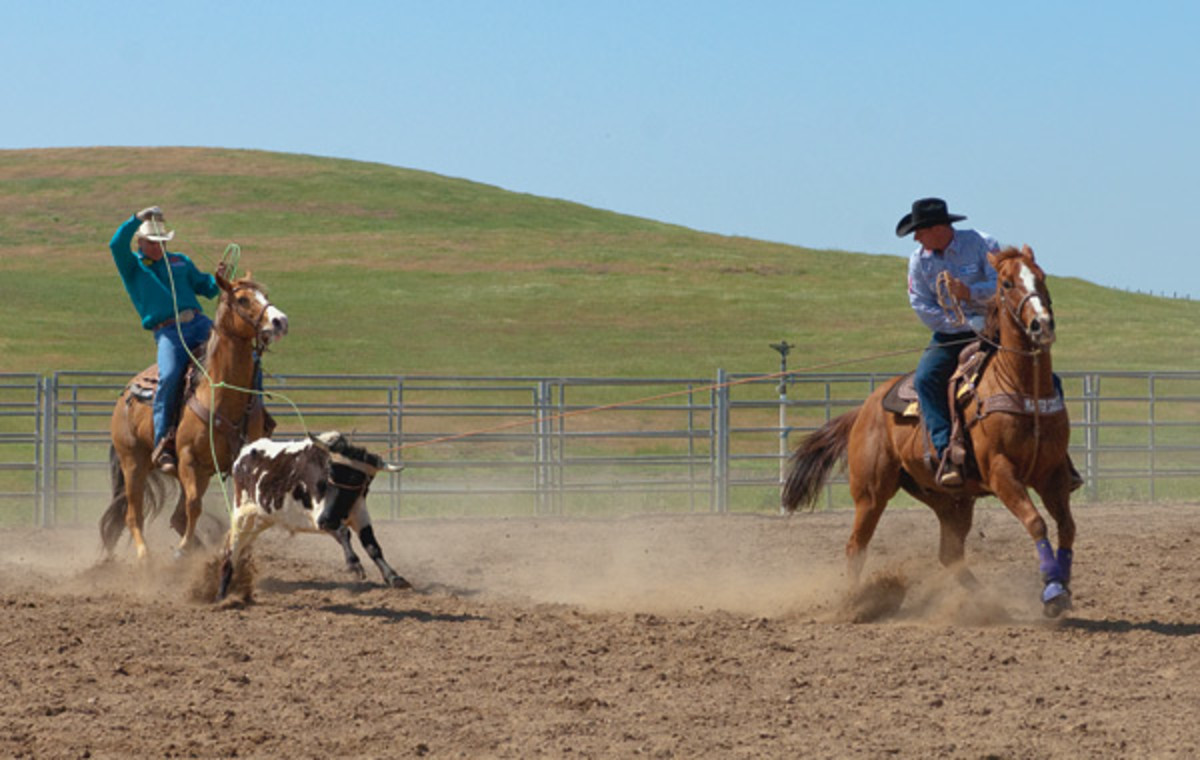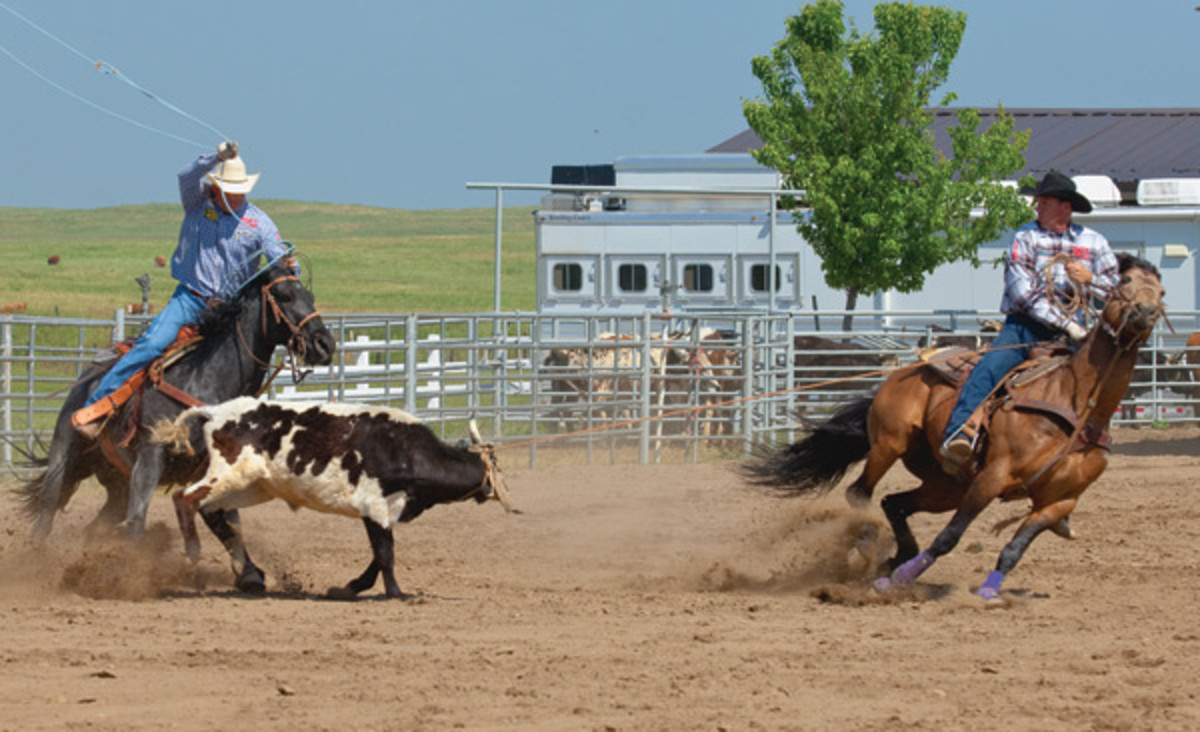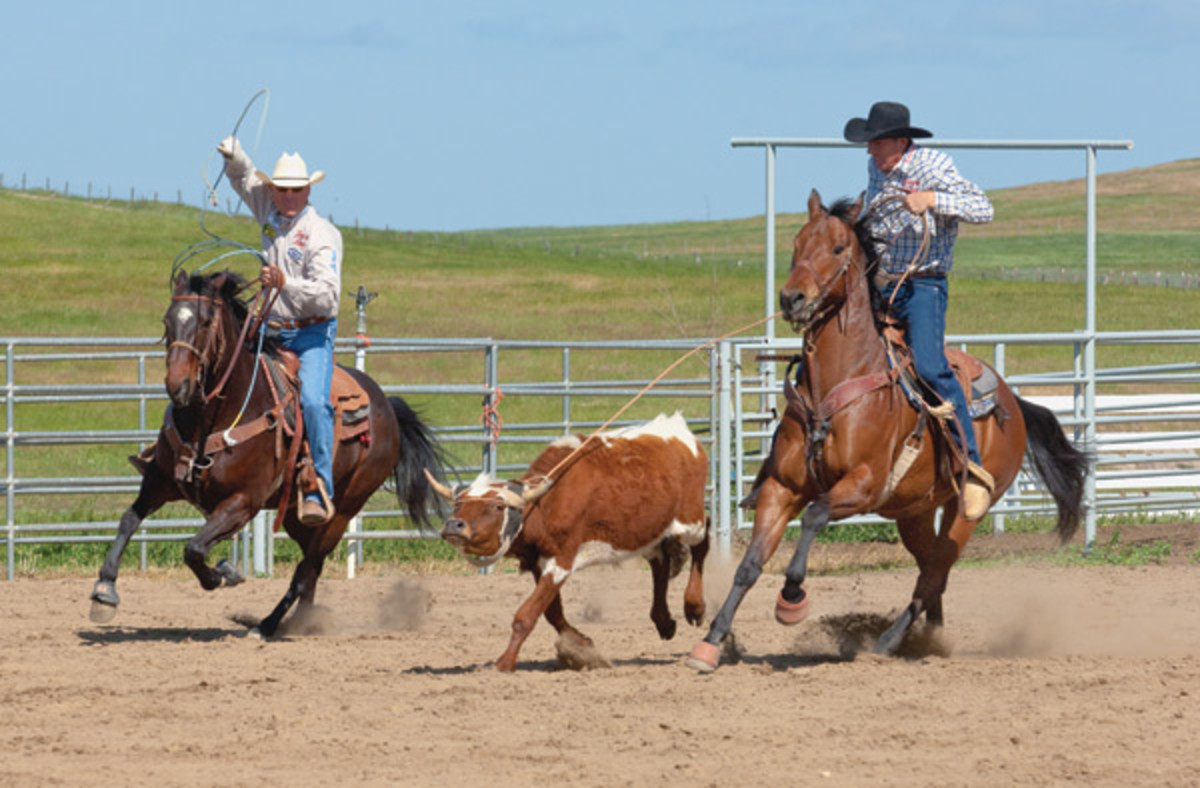Rope Basics for Team Ropers
A common question I get asked all the time is how stiff a rope I use and what I think other people should use. The range of people asking are all up and down the number classification system. For the lower numbered guys who are used to heading with a limber rope, it’s hard to just start out using a stiff rope when they decide to heel. So I tell them to use as stiff a rope as they’re comfortable with; that stays open pretty well. I don’t know anyone who really ropes well who doesn’t use at least a medium, which has enough body and stiffness to keep it open so when you place it, it stays open and gives you some open coverage without wanting to fold or close up on you as you bring the loop in and set it down.

If you get too limber a rope, the top and bottom of the loop want to stay too close together and it’s too flimsy. On the other hand, there are guys who’ve told me that using a more limber rope to practice and rope the dummy with helps them feel the tip of their rope, because you can feel the tip when you swing it and go to turn it over when you bring it around your head. In the beginning stages of roping and learning to get a good feel for your loop—when you’re starting to master and develop a good swing—I’d say to start out with more of a head rope with a softer lay and learn to handle that roping the dummy. When you go to rope cattle, move up and use something a little stiffer, because you’ll be putting more power and speed on your swing.
Rope Materials: Nylon, poly, blends?
The kind of materials they use to make ropes nowadays can differ quite a bit. There are different blends that each rope manufacturer tries to come up with to produce a certain feel, whether that’s providing more body, a quicker, faster feel or maybe even a little duller, slower feel. A rope with the different blends in it can react to weather conditions a little differently. The color of a rope can also be a factor, as can the wax and the dye blends used in a rope that can give it a little different feel. There are so many different kinds of ropes out there that you really need to experiment with them until you find the blend you like. For years they made ropes that were straight nylon, and those also had a different feel to them.

I personally like a straight nylon rope, especially in the wintertime when it’s cooler. In my opinion, winter weather tends to make the twist in a rope loosen up and want to backswing. For me, nylon ropes don’t react as much to that cold weather. I like a fiber-poly blended rope in the warmer summer months. When the heat expands your rope and makes it swell up and feel tighter, that blended rope compensates better for that time of year. This is just my personal opinion, of course. Ultimately, everybody needs to find what works best for them.
Finding the Right Rope Weight
When it comes to the weight of your rope, some people like a heavier, weighted rope to help the bottom of the loop stay on the ground better. I like a little lighter rope with just enough weight to it. I’ve roped all my life, so I can feel the slightest difference in weight and am kind of picky in my rope selection. I’ve used Cactus Ropes for quite awhile now. Mr. Barry (Berg) is the main man in figuring out the formulas of each rope, and they’re all specifically designed to fit different likes and needs.

The evolution of the rope-making industry has come from the correspondence between the pro ropers and guys like Barry, who make and manufacture the ropes, and come up with different ways to make a rope react a certain way. How they spin them on a machine, how tight they twist them, the different blends they put into them, the knots they use, the wax they use, the hondas, the burners, how they stretch and coil them all factor into the finished product. All of those factors go into how a rope feels and how long it’s going to last.
The rope makers have all this down to a fine science. Rope technology has helped advance the sport of team roping. One reason the headers can throw so far and so fast is because of the ropes that have been designed and manufactured in the last 20-25 years. Ropes can be fed faster, thrown further and fly straighter because of the engineering designs and how they’re made.
Feel ’em Out
Don’t be afraid to experiment with different ropes. That’s the only way you’re going to learn what works best for you. I’m pretty good friends with all the guys who rodeo for a living, and I’ve never been afraid as we’re riding around warming up to ask the other guys to feel their ropes. Pro ropers shape their ropes just the way they want them, so I’m always curious to learn what feels good to the next guy. Feel and try all different kinds of ropes. Then remember that it’s all about personal preference, and use what feels best to you.











